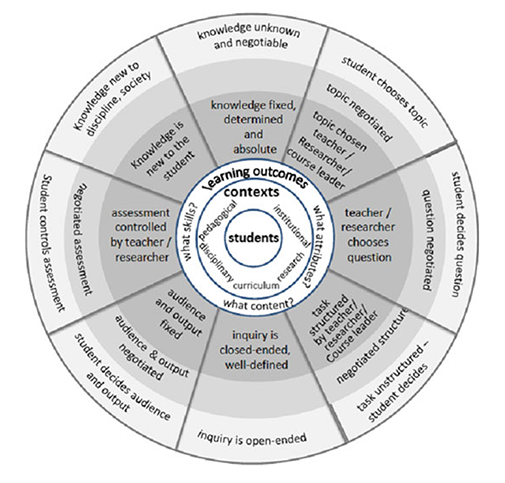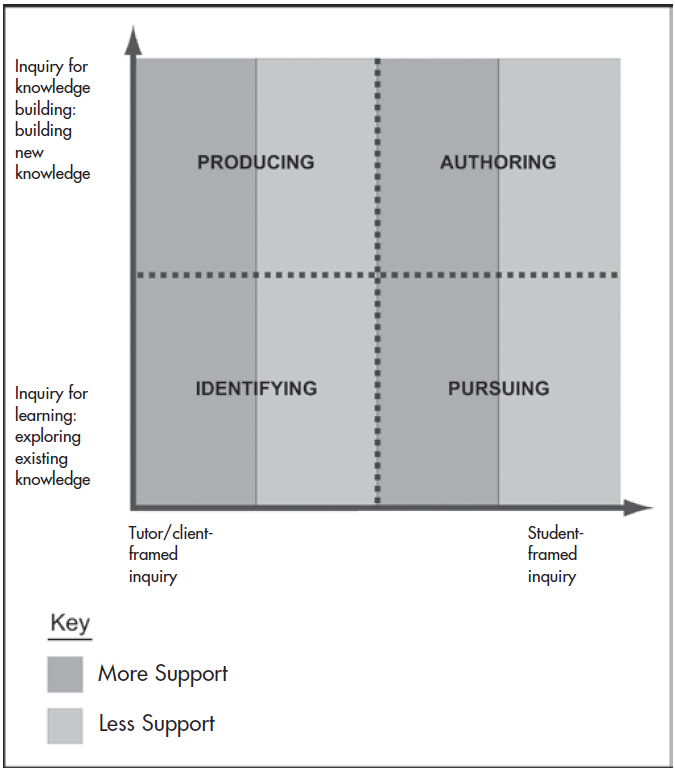Theoretical Models
Introduction to selected research based-education models
Various researchers have prepared models of the different types of RBE programmes. A selection of these is presented here. We facilitate these models as inspiration for the teacher who wants to actively link the processes, values and results of research with activities in their teaching.
Healey & Jenkins
The Healy and Jenkins model shows different ways of integrating research and research-like activities at the university. The model’s horizontal axis indicates whether the focus is research content or research processes and problems, while the vertical axis indicates the degree of student involvement and independence. The model is based on an implicit pedagogical point that active student participation in lessons is a condition for in-depth learning.

Source: Healey and Jenkins 2009
Angela Brew
Brew’s model is a further development on the Healy and Jenkins model, among others. The model demonstrates the different choices to be made when developing research-based methods for a course. Students are at the centre of the model and their needs serve as a starting point for the structure of the course. The close contexts and the externally-determined requirements for teaching are subsequently taken into account. These comprise the possibilities within the framework of the course. The grey areas show the different parametres on which the research-based education can vary. The closer to the centre, the more traditional the teaching. The location of the grey areas does not need to be consistent. A teaching programme can in some areas be very traditional, while it in others more experimental.

Source: Brew 2013
Levy and Petrulis
The Levy and Petrulis model was inspired by Healey. The model show different ways in which research and teaching are combined in the experience of the student. The model is developed on the basis of interviews with bachelor students about their experiences with research during their education programmes. The model’s vertical axis indicates whether the research inquiry is framed by students or teachers, while the horizontal axis indicates whether focus is on exploring existing knowledge or building new knowledge. The grey areas indicate the level of support.

Source: Levy and Petrulis 2012
Sources
Brew, Angela (2013): Understanding the scope of undergraduate research. A framework for curricular and pedagogical decision-making. In Higher Education 66 (5), pp. 603–618. DOI: 10.1007/s10734-013-9624-x.
Healey; Mick and Alan Jenkins (2009): Developing students as researchers. In Simon K. Haslett and Hefin Rowlands (Eds.): Linking Research and Teaching in Higher Education. Proceedings of the Newport NEXUS conference 2009. Newport: University of Wales, pp. 7–11.
Levy, Philippa; Petrulis, Robert (2012): How do first-year university students experience inquiry and research, and what are the implications for the practice of inquiry-based learning? In Studies in Higher Education 37 (1), pp. 85–101. DOI: 10.1080/03075079.2010.499166.
